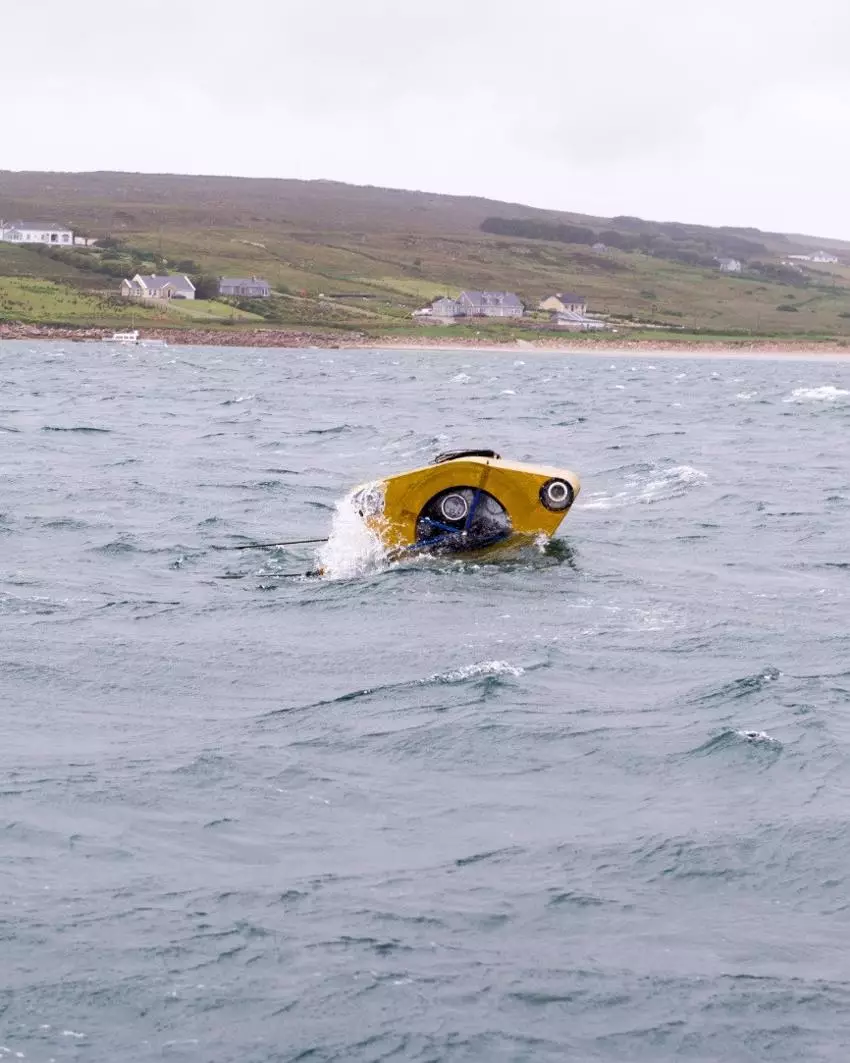This project addresses the renewable energy technology challenge area, with the objective of establishing the technical feasibility of basalt fibre reinforced High Density Polyethylene (HDPE) as an advanced material for the primary structure of an ocean wave energy converter (WEC). HDPE offers a low-cost structural material that is resistant to UV, corrosion and biofouling increasing the lifetime and reducing the maintenance requirements for a wave energy converter. While fibre reinforced HDPE has been previously investigated, the use of basalt fibres is novel and offers superior properties compared to a standard E-glass which is commonly used in fibre composite manufacture. Basalt fibre is also chemically inert and when combined with recycled HDPE potentially offers a high performance, low cost, green structural material for wave energy converters. In addition to the immediate application to WEC’s the material has application to other offshore energy generation technologies.
A current challenge for wave energy generation is to reduce the levelised cost of electricity (LCoE) generated, necessary to increase the competitiveness of WECs for energy generation. The use of fibre-reinforced HDPE as a structural material offers an improved lifetime and reduced maintenance costs over conventional structural materials such as steel. This can significantly contribute to the necessary reductions in LCoE. Wave energy is an inherently low carbon source of energy, and one objective of the project is to use recycled HDPE thereby reducing the environmental impact of the manufacturing process. The UK is well placed to take advantage of wave energy generation, with the 2011 UK Renewable Energy Roadmap reporting that wave and tidal energy could generate 27GW by 2050.
Basalt fibre reinforced HDPE as an enabling technology for lower-cost WEC devices contributes to all parts of the energy trilemma through reducing carbon emissions, reducing energy costs and providing security of supply through taking advantage of the UK’s wave resources.
The project will explore the potential of this material by investigating the influence of parameters such as the relative proportion of fibre and HDPE on the mechanical behaviour, development of suitable material composition and verification of the ability of existing manufacturing processes to utilise the new material.
Composite development and optimisation led by Professor Karnik Taverdi
Brunel University aims to develop and optimise a suitable composite material manufactured with different fibre concentrations, fibre preparation, additives, coatings etc to investigate the influence of these parameters on relevant material properties. Mechanical testing and microstructural investigation will be used to measure material strength and stiffness, the fibre distribution within the material and the quality of the adhesion between the fibre and matrix materials. Co-rotating intermeshing twin-screw extrusion technology will be used to compatibilise and combine fibres with the base polymer and the composite produced will be stranded and pelettised ready for further processing. The test samples will then be prepared primarily by injection moulding, if necessary compression moulding or rotational moulding techniques will also be used. Both virgin and recycled HDPE material will be investigated. The material composition that provides the best performance properties will then be used for the WEC application.
Structural Simulation and Modelling led by Dr James Campbell
In collaboration with partner Sea Energies, Brunel University will develop one or more representative structural models to allow the mass of a WEC using the novel material to be assessed. The model will be based on the material properties of the best performing composite. The same models will be used to estimate the mass of steel and unreinforced HDPE versions of the same WEC. Along with the device mass for composite material this information will be used to estimate the gain in levelised cost of electricity (LCoE) from using the new material.
 SeaEnergies wave energy converter (scale model) on trials off the coast of Ireland. Our research aims to replace the hull with recycled HDPE-basalt fibre composite offering a high performance, low cost, green material.
SeaEnergies wave energy converter (scale model) on trials off the coast of Ireland. Our research aims to replace the hull with recycled HDPE-basalt fibre composite offering a high performance, low cost, green material.
Meet the Principal Investigator(s) for the project

Dr James Campbell - James Campbell BEng MSc PhD CEng FRAeS
Dr James Campbell is Reader in Structural Integrity, Fellow of the Royal Aeronautical Society and Chartered Engineer. Dr Campbell’s primary research interest is numerical modelling of materials and structures during transient events such as impact and crash, with 15 years expertise leading research projects as Principal Investigator (PI) funded by the EU, Innovate UK, ESA, industry, academia and research organisations (UK and internationally). Dr Campbell has more than 100 publications (43 peer-reviewed journal papers and over 60 conference papers/book chapters).
Areas of Expertise
Numerical modelling of the transient response of materials and structures.
Meshless methods, including Smoothed Particle Hydrodynamics (SPH).
Fundamental development of physical models and non-linear numerical methods (FE and SPH), through implementation and code development up to complex engineering analysis.
Predictive analysis of lightweight structures, structural integrity and failure, Impact on spacecraft, fluid-structure interaction, impact on aircraft (birdstrike, ice, hard object), crashworthiness, fragmentation and shock loading.
Characterisation and modelling of materials (metallic, composite, ceramic, polymer), from quasi-static loading through to high strain-rate behaviour and shock wave propagation.
Experience
Dr Campbell graduated from Imperial College London with a BEng in Aeronautical Engineering and Cranfield University with an MSc then PhD in Astronautics and Space Engineering. His PhD research developed numerical modelling of hypervelocity impact on spacecraft and the smoothed particle hydrodynamics (SPH) method. This was followed by research on numerical modelling of shock waves at the Centre for Nonlinear Studies, Los Alamos National Laboratory, USA, for two years. He returned to Cranfield University as Lecturer/Senior Lecturer in Computational Mechanics and Course Director of the Structures, Crashworthiness and Impact MSc. Dr Campbell was then appointed as Head of the Crashworthiness, Impact and Structural Mechanics Group at Cranfield.
Awards
Derek George Astridge Safety in Aerospace Award, IMechE, 2009.
Royal Institute of Naval Architects Medal of Distinction, 2010.
Selected research projects
Principal Investigator. Development of Advanced Material Modelling for Metal Additive Manufacturing (TWI/Lloyds Register Foundation).
Principal Investigator. Basalt Fibre Reinforced HDPE for Wave Energy Converters
Co-Investigator. Harpoon Impact Modelling
Principal Investigator and Project Coordinator. Smart Aircraft in Emergency Situations (SMAES)
Principal Investigator. Nonlinear Static Multiscale Analysis of Large Aerostructures (MUSCA)
Dr Campbell's expertise is applied to the aeronautics, space, defence, automotive, manufacturing, energy and offshore sectors. It is directly linked to teaching and supervision of PhD and Masters students and professional development programmes.
Related Research Group(s)
Mechanics of Solids and Structures - Internationally leading research in the areas of experimental testing and computational modelling of solids and structures.
Assessment of Structures and Materials under Extreme Conditions - Thermo-mechanical modelling of metallic, non-metallic and composite structural materials; numerical methods development for solid and structural mechanics applications; experimental methods to support the development and application of advanced material and structural models.
Experimental Techniques Centre - A highly regarded cross-disciplinary characterisation facility, with specialist staff that have expertise from various scientific disciplines, e.g. biology, metallurgy, geology and engineering.
Partnering with confidence
Organisations interested in our research can partner with us with confidence backed by an external and independent benchmark: The Knowledge Exchange Framework. Read more.
Project last modified 02/10/2023